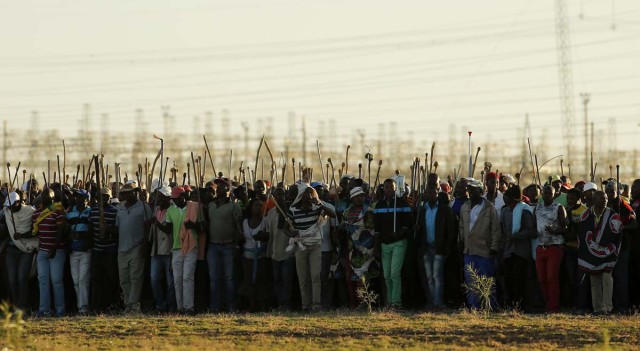South African coal miners face challenges
 An agreement between the National Union of Mineworkers and coal sector firms ended a more than one-week coal strike involving thousands of employees. Workers returned to their jobs on Oct. 14.
An agreement between the National Union of Mineworkers and coal sector firms ended a more than one-week coal strike involving thousands of employees. Workers returned to their jobs on Oct. 14.
Bosses and unions began conciliation talks after reaching a deadlock in negotiations in August. The NUM, which represents 72 percent of the 17,000 employees covered by the deal, had demanded wage increases of as much as 14 percent.
On Oct. 9, mining companies including Anglo, Glencore and Exxaro Resources Ltd. presented a revised two-year deal; further changes were made on Oct. 12. The final agreement adds another 750 rand ($56) to 1,000 rand ($74) to monthly wages, retroactive to June.
Several factors have contributed to South Africa’s overall economic downturn, including more than two decades of problems within the mining industry. Gold, diamonds, coal, iron ore and platinum mining had turned South Africa under apartheid into the largest industrial center on the African continent.
Since the African National Congress took power in 1994, downsizing by the mining industry bosses has resulted in the decline of employed workers from 800,000 to below 500,000.
Many gold mines have been closed in South Africa. More gold is now being produced in Africa, China, Australia, the United States, Canada and Latin America. Prior to the 21st century’s first decade, South Africa was the world’s largest gold producer. This situation has changed dramatically over the last decade. Yet South Africa is still the world’s fifth-largest gold producer.
Mine owners say mechanization of South Africa’s mining industry is due to “rising production costs.” For more than three decades, militant mine workers seeking improved wages have pressured the ever profit-seeking owners. Consequently, mine owners have instituted massive layoffs, increased workloads and cut real wages to reduce labor costs.
Even in the platinum sector, which mines most of that strategic metal globally, thousands of workers have lost their jobs in the last three years. Since the major strike in Marikana in 2012, the platinum sector has experienced major changes. Owners now threaten to lay off up to 35,000 workers. The ANC government has pressured the capitalists not to cut more jobs.
Gov’t must nationalize mining industry
The South African Chamber of Mines reports the loss of more than 35,000 mining jobs from 2012 through 2014 — 22,900 in the gold sector, 10,800 at platinum sites and 1,600 in iron ore mines.
Despite this crisis, the government will not take control of the mining industry and nationalize it under workers’ control to halt the layoffs and redirect mineral production based on the laboring class’s interests. Such measures would prove popular among the masses, but would prompt a negative response among mine owners, international financial institutions and Western governments.
Mining firms have reaped billions of dollars in profits from exploiting African labor for the last 150 years. When workers today demand a greater return on their productivity, owners seek ways to undermine their rights to a decent wage and living standard.
Without the working class’s militant organizing and activism, the ANC would not have been able to gain a majority within the nonracial government which took over in 1994. The ANC cannot ignore the plight of union members in the struggle against the bosses without damaging its relations with its popular base.
The reduction in commodity prices has led to many global financial problems, particularly in the “emerging economies.” Capitalist states in Europe and North America are concerned by the independent efforts of Brazil, Russia, India, China and South Africa [the BRICS countries], which have proposed the formation of an alternative global lending institution that could challenge the International Monetary Fund and the World Bank.
Imperialist spending on militarism and bank bailouts in advanced capitalist countries also drain resources that could be reinvested into projects to rebuild cities and improve public services, social programs, education and scientific research. However, it will take a movement of the working class, farmers and the nationally oppressed to reverse the economic policies of the ruling classes, whose primary aims are to increase profits.

